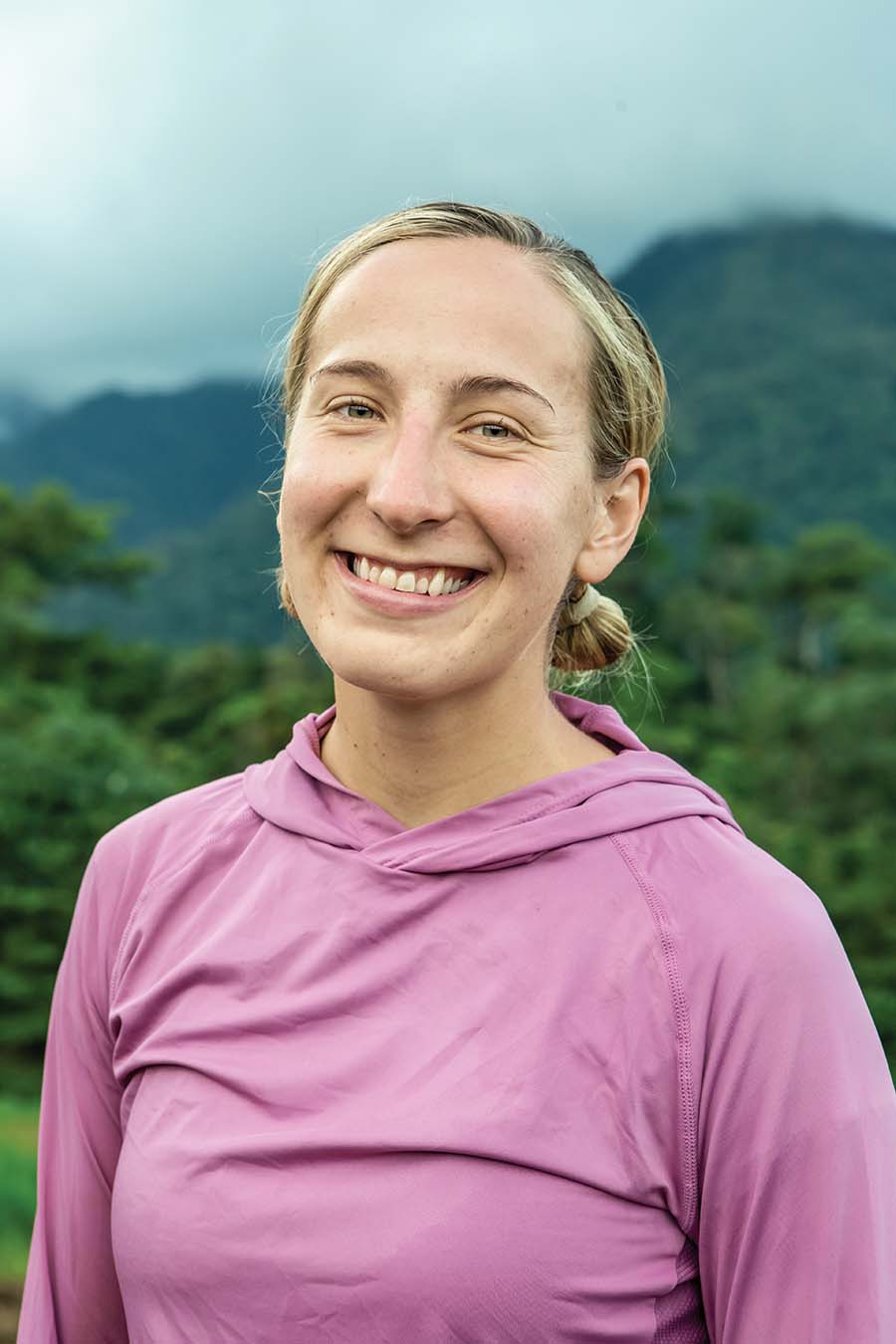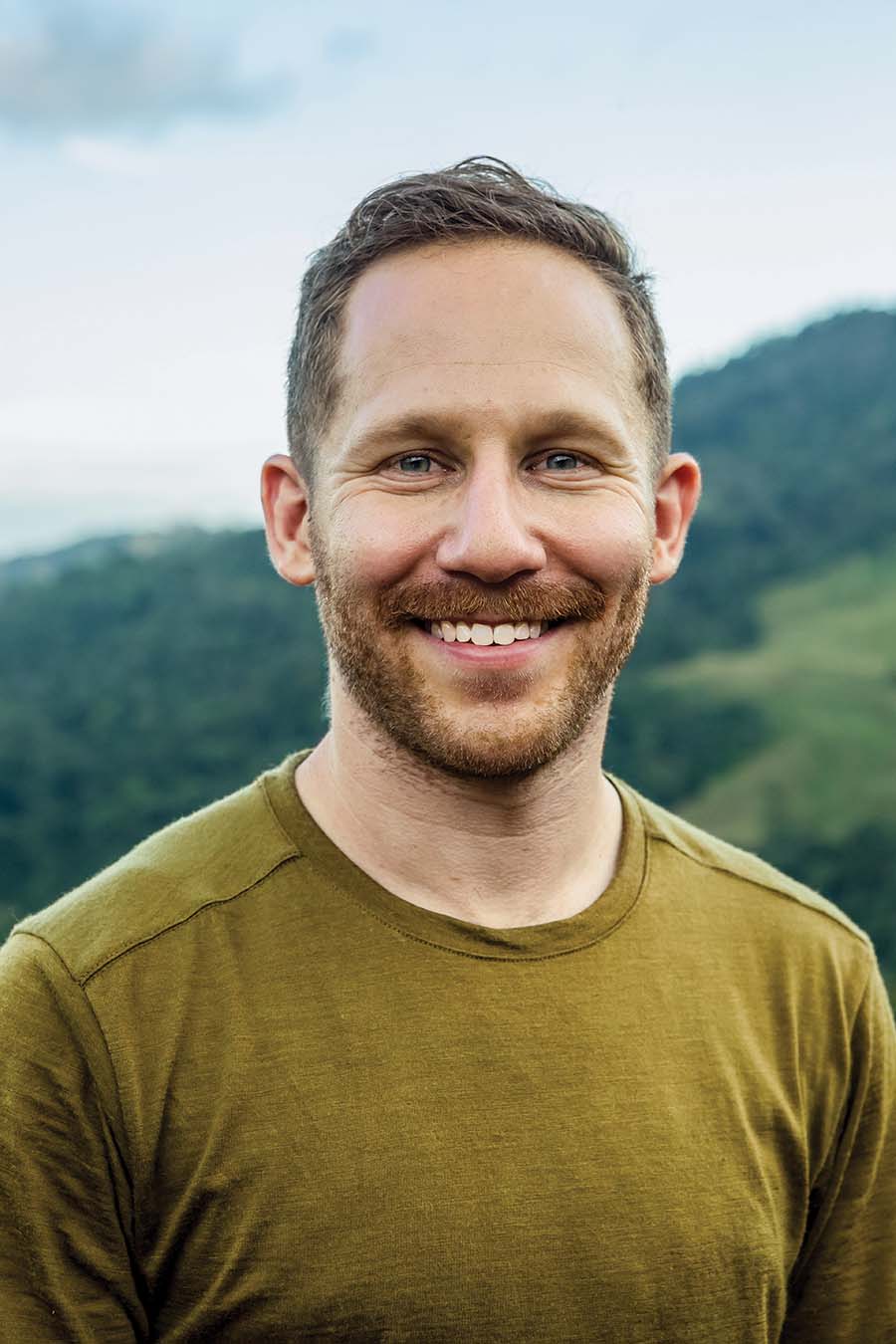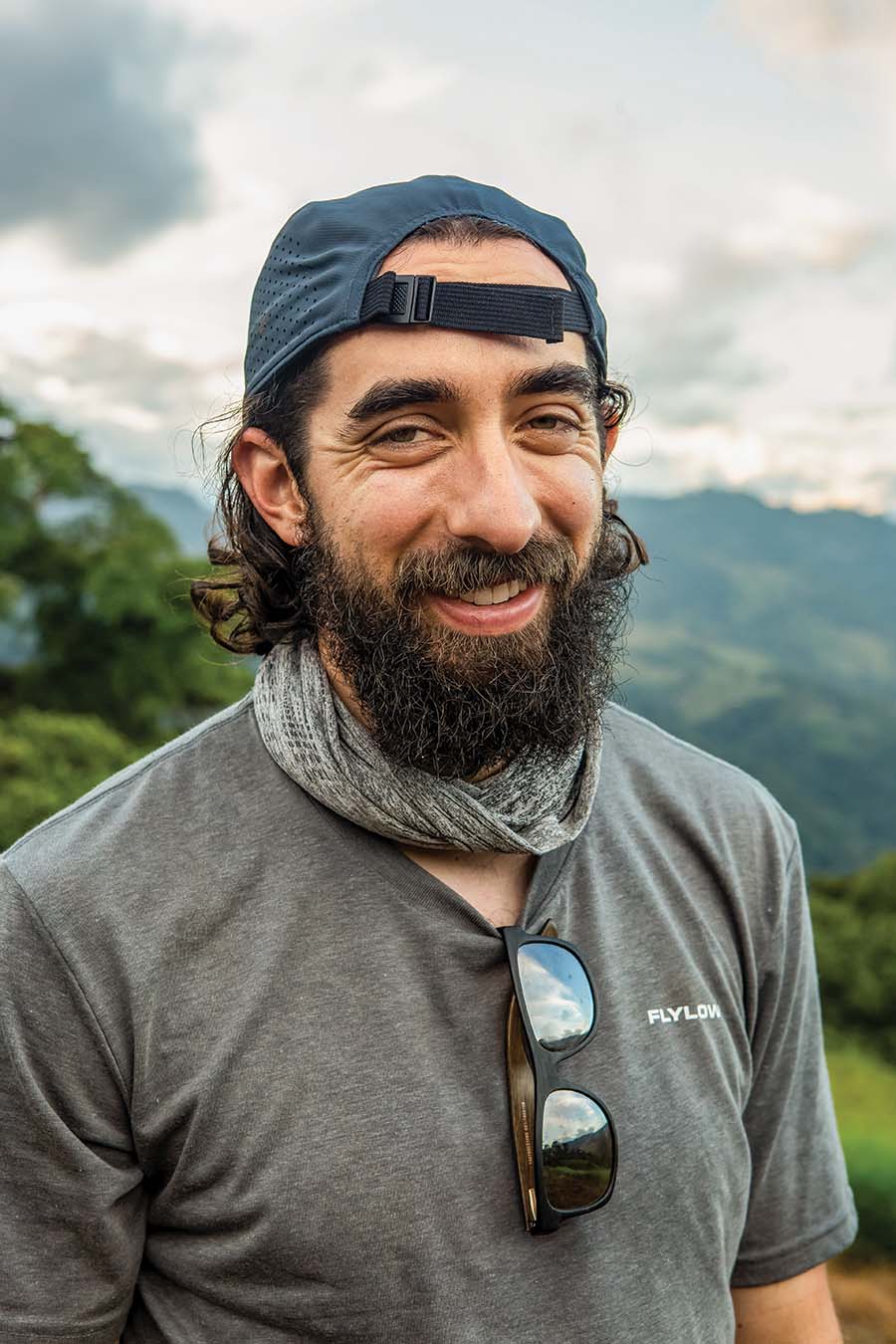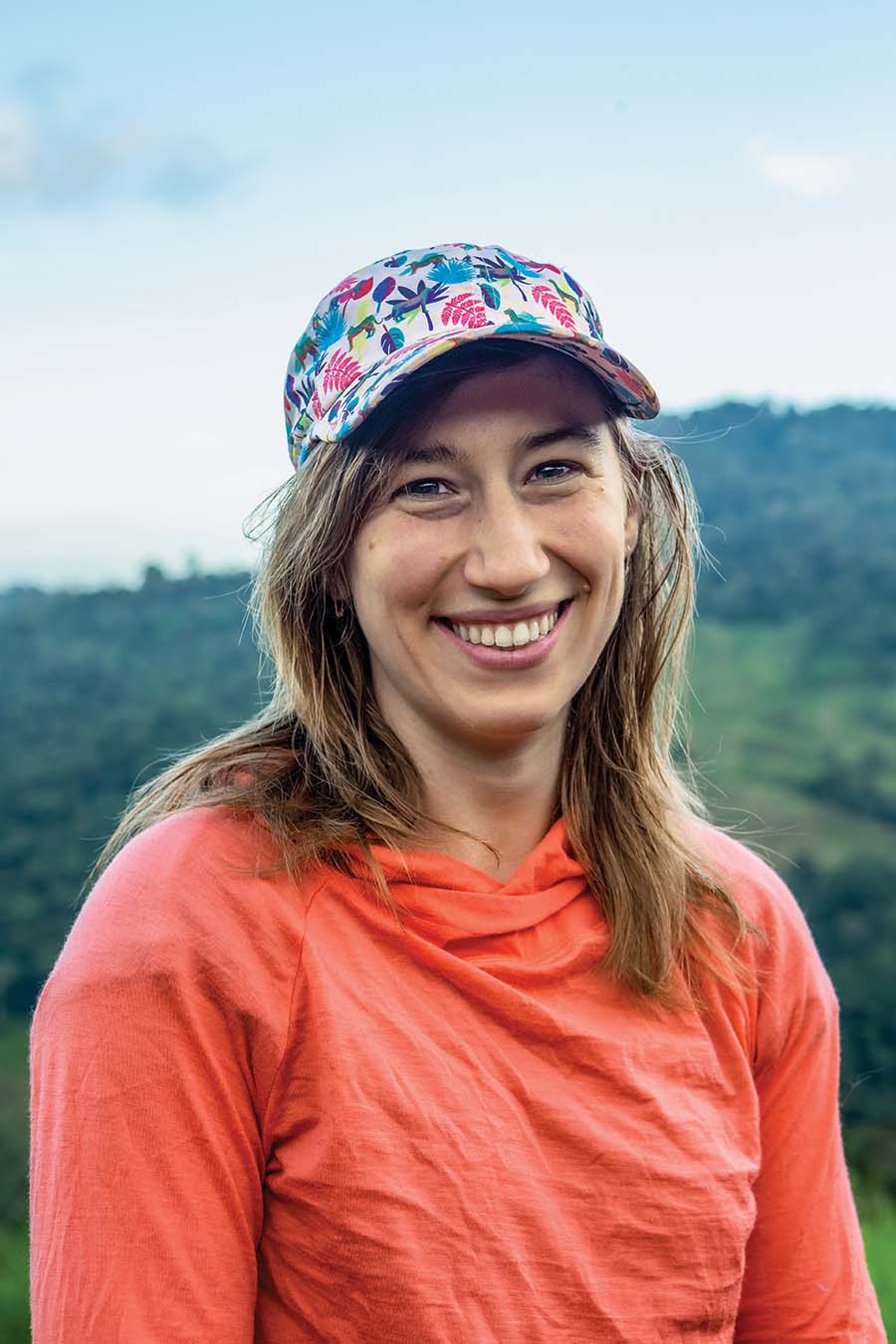Products You May Like
You probably already know that Panama is a connector: of oceans, of trade routes, of North and South America. What the Backpacker team found out when we embarked on a five-day trek through Parque Internacional La Amistad—which straddles the provinces of Chiriquí and Bocas Del Toro on the western edge of the country—was a link to so much more: to a pristine jungle ecosystem, to Indigenous tribes who’ve called the land home for millennia, and to our wildest hiking dreams.
Embrace the Unfamiliar
In Panama, I left my expectations behind. By Amelia Arvesen
I’m in a hiking version of the floor is lava, hopping as gingerly as I can between mounds of grass with my 40-pound pack. Around me spreads the 800-square-mile Parque Internacional La Amistad (PILA) that encompasses the montane jungles of the Cordillera de Talamanca.
As I look in wonder and exhaustion at the ridgeline ahead, my right foot slips into a muddy hole carved out by cows that sometimes graze these pastures. I feel a sharp pinch in my ankle. Just what I need: an injury on the second day of our five-day trek. As I steady myself, I’m relieved to find that it doesn’t hurt to walk, but I’m annoyed nonetheless. Our guide, Plinio, says camp isn’t much farther.

Once at the shelter—a tin-and-wood hut for Indigenous shepherds who pass through these mountains with their flocks—I peel off my sopping shoes and socks. There’s no swelling, but I do find blisters the size of quarters on the pads of my pruney toes. If I wrap them in dry bandages now, they’ll only get wet again when I pitch my tent in the gentle but steady rain.
With more steep, overgrown trail ahead, this trip can go one of two ways. I can let my frustrations take over, or I can lean into the challenges that come with hiking through the unknown. I accept that the jungle’s plans are different from my own. A rolled ankle? Five full days of rain? Calf-deep mud? If those things come to pass, so be it. They’re worth it for the sherbet sunsets, lunches wrapped in banana leaves, and leaf-cutter ants marching in step across the trail. I’m exploring one of the most biodiverse tropical wildernesses in the world. It’s filled with uncertainties, but also surprises. I should leave my expectations at the trailhead and turn my attention to the jungle’s delights.
The rainforest is even more colorful and curious than photos can show. Over the first 24 hours, our group squeezes through narrow, mossy canyons in the loam sprinkled with delicate mushrooms, climbs to the foggy top of the continental divide to peek at the Caribbean, and wades through streams as clear as glass.
By the third day, blisters burn in my mud-caked shoes. I roll my ankle a second time. My clothes barely dry overnight. Swimming in a river during lunchtime soothes my aches, as do other unforgettable moments. We see more wildlife—lizards, insects, and toucans. We bite into oranges picked straight from the trees. We cross a precarious wire bridge, one hiker at a time. Had I not shifted my perspective early on, I wouldn’t have appreciated Panama’s charms.
My blisters render me slower than the others, so I hang back with Plinio on our final day. This leisurely pace is preferable, because I don’t want our journey to end. With his machete, Plinio splits open a cacao pod and uses his fingers to scoop out a seed covered in milky-white pulp. I follow his lead and pop one in my mouth. It’s sweeter, earthier, and better than I could have ever imagined.
Plant Power
The flora of PILA changes one hiker’s view of trailside vegetation forever. By Eli Bernstein
Until I went to Panama, plants had always been secondary to my hiking experience. Sure, I’d geek out over an enormous, gnarled-with-age tree if I came across it during my wanderings, but mostly the views I sought were of mountains, lakes, and valleys. Sometimes, plants could even be a hindrance: I have not-so-fond memories of hiking for hours in New York’s Adirondack Mountains with only a vague sense that there was sky above me due to tree coverage, then topping out for a summit view obscured by . . . more trees.
All that is to say, as we prepared for our hike through the cloud forests of PILA, I was much more excited about the possibility of spying flashy birds, gamboling monkeys, and shimmering snakes than I was about the flora along the trail. All that changed on our first night of camping, spent in the hills above the town of Boquete. As frogs croaked around us and a light mist descended upon the area, we embarked on a twilight walk near camp.

Immediately, we were ushered into an environment completely different from the familiar alpine panoramas of my home in Wyoming. The sheer density of the plant life was astonishing: Vines draped from every tree, which themselves were covered with mosses, fungi, and ziggurat-like bromeliads. Every trunk and branch seemed to harbor more plant life than the next. When we climbed a ridge in search of a view of the Pacific, I didn’t mind one bit that the landscape was blocked by layers of vegetation. The greenery was all-consuming, and I loved it.
Over the next four days, as we made our way north over the continental divide and toward the Caribbean, my awe grew with every mile. Almendro, balsa, and palm trees skyrocketed upward, shading us from the near-equatorial sun and making the trail feel like a palatial hallway. Orchids the size of fingernails caught our eyes, twinkles of fuchsia among shaggy moss and lichens. Ground palms sprouted ridged leaves bigger than a person. We passed by water apple and guava trees, their fruit a welcome change of taste from our energy bars and nut mixes. The trees, logs, and brush were so thick that deviating from the narrow, muddy trail would have been impossible without a bulldozer. The flora of the Cordillera de Talamanca wasn’t just a backdrop; it was the all-encompassing, dizzying main event.
On our penultimate hiking day, we ascended to a hilltop house owned by Indigenous farmers, friends of our guide Plinio. The Caribbean gleamed in the distance, but I turned my attention back to the mountains from which we’d come. From this remove, the forest appeared monochrome, a dark emerald stippled with shreds of mist moving in from the ocean. But now I knew better: Under that canopy lay a world bursting with every shade of green imaginable, an empire of plant life both impenetrable and inviting.
Creature Feature
Even Panama’s smallest residents demand attention. By Adam Roy
The ant that Panamanians call “hormiga candelilla”—in English, we refer to it as the little fire ant or electric ant—is a tiny, millimeter-long golden-brown speck with stiff, hair-like bristles and a crown of bulbous antennae. A sting from one results in a scorching pain, giving the insect its nickname. Outside of Central and South America, electric ants wreak havoc as an invasive species, eating bird and tortoise hatchlings and outcompeting native insects. They’re aggressive, venomous, and, at this particular moment, high on the Caribbean side of Panama’s Cordillera de Talamanca, they were crawling up my pant leg.
“Yep, that’s them,” said Lauriano, a local cattle rancher and one of our guides, peering down at my feet. I hopped off the anthill I had inadvertently stepped on, brushing a small squadron of insects off of me.

We were standing in a clearing in PILA, catching our breath after slogging through a muddy field. Mountains carpeted in thick viridian cloud forest stretched out into the hazy distance; above us, a pair of toucans glided to a perch on a tall tree. It was so captivating—the Discovery Channel dream of a jungle I grew up with—that at first I hadn’t even noticed the fanged specks meandering up my leg.
I’ve always had a healthy respect for Panama’s invertebrates thanks to my grandfather, who spent a year in the American-occupied Canal Zone after the army drafted him near the tail end of World War II. I was raised on his stories, like the one about how he had to jump into a river for relief after a small army of stinging ants invaded his clothing. From that day on, my grandfather told me, he kept his cuffs buttoned and his pant legs tucked into his boots while on patrol, no matter how hot it was. If you’re a typical hiker, this is probably how you think of the insect life of the jungle: a low-level nuisance that occasionally becomes an actual danger when you provoke the wrong species.
If you love the jungle, however, you owe these creepy-crawlies for their handiwork. By some estimates, ants alone make up 30 percent of the animal biomass of some tropical rainforests, and insects in general comprise 90 percent of the animal species found there. Flies and wasps pollinate the multicolored flowers that hang off tree trunks, as well as the guava and figs that feed the toucans we saw and the howler monkeys we heard roaring at each other that night. Millipedes, like the 5-inch-long armored specimen we found scuttling across the trail, help create the rich soil the plants depend on. (Alarmingly, these essential workers are in decline: In a January 2021 note in the Proceedings of the National Academy of Sciences, Daniel H. Janzen and Winnie Hallwachs, two long-time biomonitors working in Costa Rica, warned that they’ve seen insect populations decline over the decades, and they expect climate change to make the problem worse.)
Take the time to know the forest’s smallest wildlife, and a whole new world opens up. My arthropods of choice are spiders. While the other hikers in my group squinted up at the canopy looking for birds and primates, I kept my eyes on the ground and found a new arachnid around every bend. One night, I told my fellow backpackers Corey and Amelia to shine their headlamps on the mountainside field where we were camped. When they did, a galaxy of tiny points of light glitterered in their beams: the reflective eyes of thousands of half-inch wolf spiders in the grass. (If that sounds like a nightmare to you, I encourage you to guess how many pounds of biting insects those little predators eat annually.)
Of course, the jungle’s miniature creatures can be a literal pain. A few minutes after my encounter with the anthill, I heard Eli curse and turned to see him swatting at his leg: He had blundered into the same spot, and with shorts on, there was nothing to stop them from sinking their stingers into his skin. I looked down at my pants and high-top hiking shoes and thought of my grandfather. Sometimes, the difference between wildlife and pests is how well you’ve learned to share the world with them.
Forgotten Magic
What are you doing to make your younger self proud? By Corey Buhay
When I was eight years old, I made one of those mail-in, customizable plastic plates featuring a crayon drawing that your parents are obligated to keep forever. On it, I drew myself, grinning, with stick snowman arms and a safari hat, surrounded by palm trees, snakes, and toucans.
As a kid, Steve Irwin was my hero, closely followed by Tarzan. I wanted to be an explorer or a Disney princess—maybe both—and live out my days in the jungle.
Of course, that never came to pass. We tell ourselves a lot of things as kids. That we won’t give in or settle for boring office jobs. That we’ll chase our dreams. That we’ll never be like our parents. But as we grow up, our priorities shift. Maybe, in maturing, we wake up. Or maybe we just let pieces of ourselves fall asleep.

Now, I’m a journalist. I work in an office five days a week. I run and hike, but long trips are mostly job-related. So, when I got an email inviting me to Panama with Backpacker, I shrugged. It was still a work trip, but at least it seemed interesting.
Then I stepped off the plane.
The humidity hit me first, enveloping my body in a heavy warmth. It felt like getting a hug right when you need one, the kind so true and hard it makes you want to cry. The air smelled like damp earth and growing things. The closer we got to the forest, the more it smelled alive.
It’s funny when a place you’ve never been to immediately feels like home. Sometimes, daydreaming too hard inflates expectations. But PILA lived up to even my most imaginative childhood fantasies.
For five days, the trail wove through a crosshatch ceiling of vines and branches. At night, the stars winked on after a cloud-shrouded sunset dipped below the mountains. In the morning, toucans darted overhead, yellow bills catching the light. An iridescent lizard shot across my path. A quetzal startled us during a water fill-up, its emerald ribbon of a tail flashing away into the deeper forest. It was like living inside a coloring book. I looked around in awe: This was the jungle I’d always dreamed of.
I’ve heard in career seminars that you should pick a job that would make your eight-year-old self proud. It’s one of the reasons I chose to be a writer. But until visiting PILA, I didn’t realize how many other dreams I’d let myself forget. Maybe the career coaches have it wrong—maybe we should be applying our eight-year-old wisdom not just to our choices of occupation, but to all aspects of our lives. After all, our time on earth is short and uncertain.
When I got home, I started to wonder—if I hadn’t been invited on this trip, would I have waited my whole life to visit this jungle, a place I’d always dreamed of? How long will I wait before visiting the next one?
In the weeks following the trip, I resumed work on a silly piece of fiction I’d started years ago and abandoned. (Spoiler alert: There are dragons). I applied for a writer’s residency in a castle in Scotland. I signed up for a dance class.
Now, I’m saving up, and this time, not for my 401k or my future mortgage. I’m saving for a safari hat, a ticket back to the jungle, and another shot at making my eight-year-old self proud.
Do It: Parque Internacional La Amistad
Season: Year-round. April through November are the rainiest months, so opt for December to March if you prefer relatively drier weather.
Travel: Boquete, a mountain town in the province of Chiriquí, rests at the southern edge of Parque Internacional La Amistad. It’s less than an hour drive from the city of David, the capital of the province. Along with access to PILA, Boquete also offers whitewater rafting, climbing, and hiking in nearby Volcán Barú National Park.
Guide: The trail between Boquete and Bocas Del Toro is muddy, steep, and occasionally disappears completely into the forest. Hiring a guide is recommended, and Plinio Montenegro (@pmseaman1 on Instagram) knows the area and its routes—as well as its plants, animals, and residents—better than anyone.
Tours Panamá al Natural, run by Sandra Sierra, is another invaluable resource for planning your trip.
